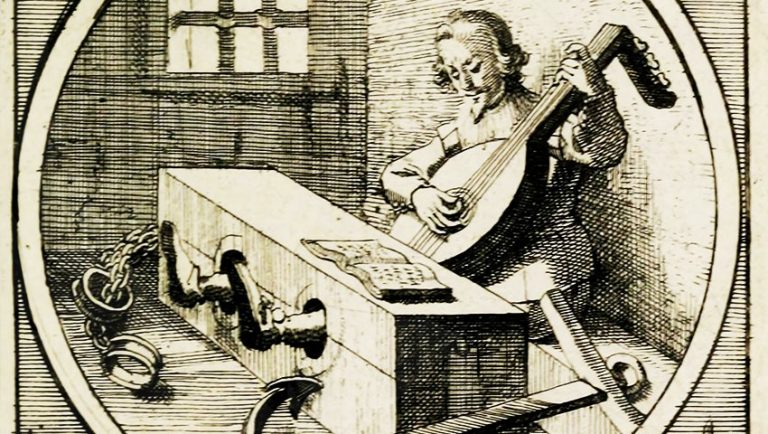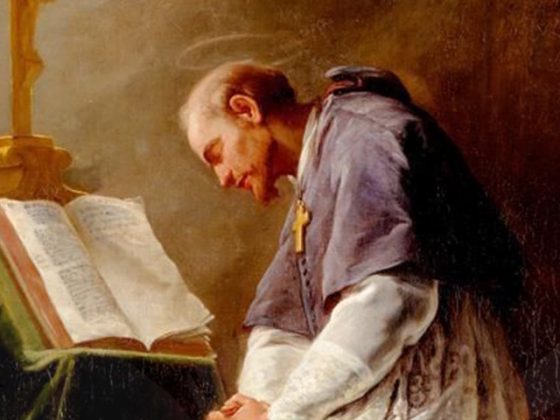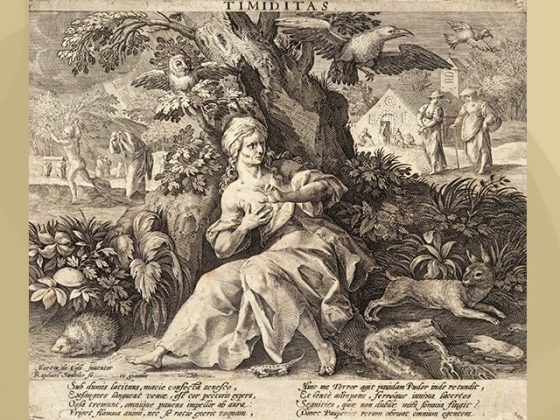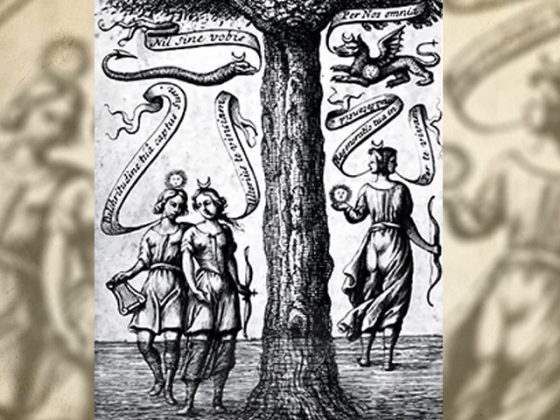Much appreciated friends:
In 1630 a book of emblems by Daniel Cramer was published called OCTOGINTA EMBLEMATA MORALIA NOVA ─'eighty new moral emblems'─.
I send you the thirty-first emblem that has as its motif…
…SPES ET PATIENTIA VINCIT
─‘Hope and patience win’─
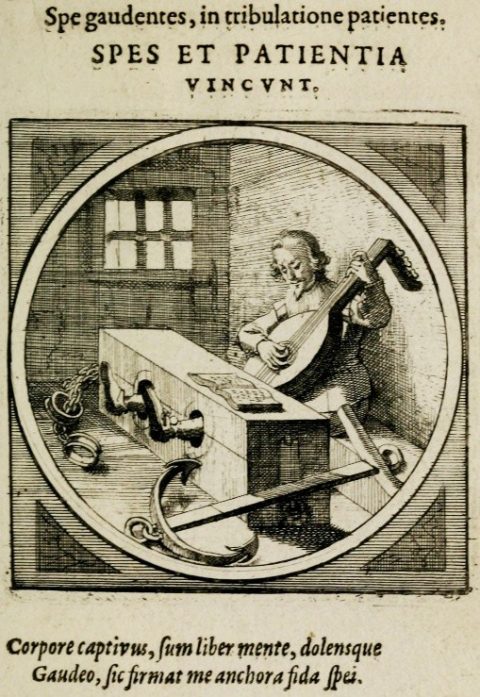
CORPORE CAPTIVUS, SUM LIBER MENTE, DOLENSQUE GAUDEO SIC FIRMAT ME ANCHORA FIDA SPEI.
‘Captive in the body, I am free in the mind, in pain I rejoice, thus the anchor of hope strengthens me.'
Description:
In the engraving we see a man who is imprisoned because his feet are immobilized by a form of torture that existed many centuries ago as a part of human barbarity.
He is playing a lute following the verses of a music book, and next to him is a huge ANCHOR that brings him hope.
The world of hermetic symbology tells us that the ANCHOR is a way of knowing how to keep our hopes while waiting for the action of the Three Primary Forces of Creation, namely: that of the Father, that of the Son and that of the Holy Spirit. Such is the message conveyed to us by this instrument that imitates a little bit the triangular shape that has served to designate the three powers of God.
Undoubtedly, in moments of frightful physical or mental rigor, we must always remember the three divine powers mentioned above. When God is present in our calamities, they disappear from our environment.
And while we wait for the mysterious hand that will take us out of our pains, we must cooperate humanly by appealing to a change of center, as does the long-suffering protagonist of our engraving, who brightens his tragedy to the rhythm of the musical notes that he plays on his guitar.
The Gnosis of all times has said it well to us: in moments of tribulation and pain, we must and can assist ourselves by shifting our attention to another center of our organic machine, for example by appealing to the emotional center, as in the case of our engraving, and in this way we do not enter into despair. But we could, depending on the case in which we were involved, help ourselves with the instinctive center ─perhaps by eating something─, or with the motor center ─by taking a walk in the open air─, or perhaps by reading a book, a written work…
Job, in his sufferings, took refuge in prayer and reflection while God tested his loyalty and patience. In short, appreciated reader, it is extremely important to know how to cooperate with circumstances even when they are not favorable to us.
We must not forget, on the other hand, that the anchor symbolizes that the ship of our voyage comes to a triumphant halt once we have reached the end of the Great Work. That is why the anchor has been represented many times in truly hermetic Rosicrucianism and Freemasonry, as an instrument that augurs to the navigators of the bronze sea the arrival at a safe port after many initiatory ordeals……
I give you some quotations that come to our aid to highlight the importance of our topic:
“Evils that do not have the strength to end life, must not have the strength to end patience.”
Cervantes
“When we say that all past times were better, we condemn the future without knowing it.”
Quevedo
“He who before his time boasts of the future, deprives his action, at least, of the merit of novelty.”
Louis XIV
“We must not cling to the present in such a way that we completely neglect the future.”
Pythagoras
“Woe to him who is always anxious about his future.”
Seneca
QUOD SCRIPSI, SCRIPS.
─‘What I wrote is written'─.
KWEN KHAN KHU


